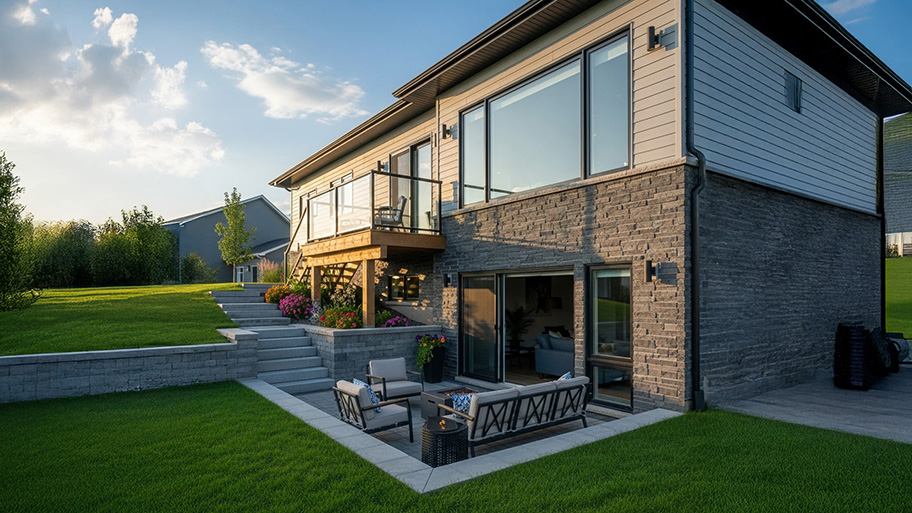
Walkout basements cost more to install than traditional basements. Our guide explores the factors that affect how much a walkout basement costs.
Underground room sizes don’t have to be under wraps
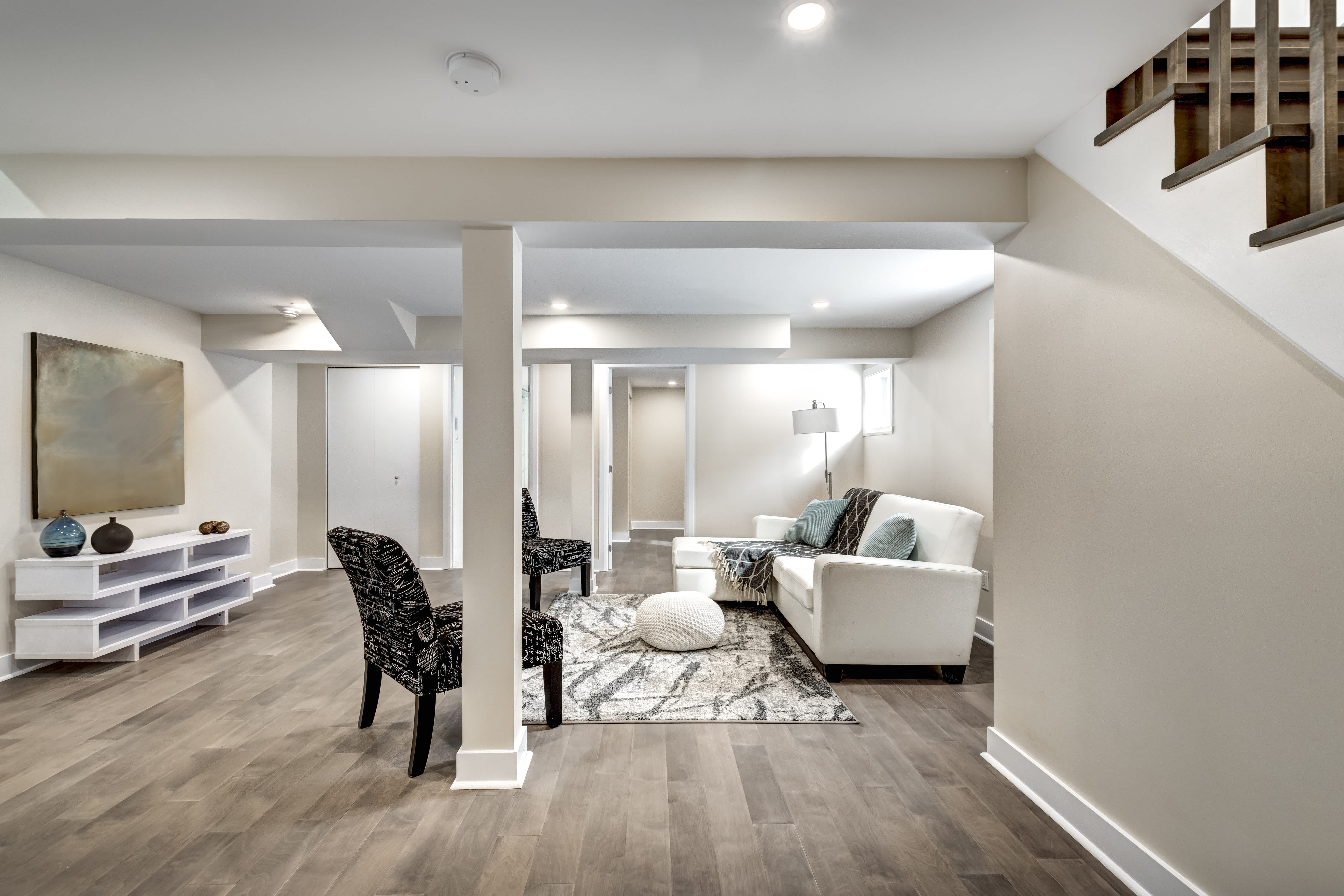

The average basement size is 1,000 square feet for a full basement, but it depends on your home’s footprint.
Most full basements are between 800 and 1,500 square feet, while partial basements usually fall between 500 and 1,000 square feet.
Basements must have ceilings at a minimum of 7 feet tall, but modern basements can have ceilings between 8 and 10 feet tall.
It’s possible to expand your basement if it feels too small, but expect to pay between $20,000 and $80,000 for the work.
Basements can add room for storage or even expand your living area, making them the most valuable and versatile foundation option. But when it comes to the utility they add, size matters most. Whether you’re planning a basement remodel and want to get an accurate estimate based on square footage or you’re building new construction and want the right size space, understanding average basement sizes is a good place to start.
The standard basement size is 1,000 square feet, and most range from 500 to 1,500 square feet, depending on the type of basement and the size of your home. Since a basement acts as the foundation for your structure, it usually takes up the entirety of your home’s footprint, meaning it will have the same square footage as your first floor.
There are three main types of basements, and they vary a bit in size. Partial basements are the smallest, as they only take up a portion of your home’s footprint, while full basements and walkout basements are significantly larger and take up the same area as your first floor.
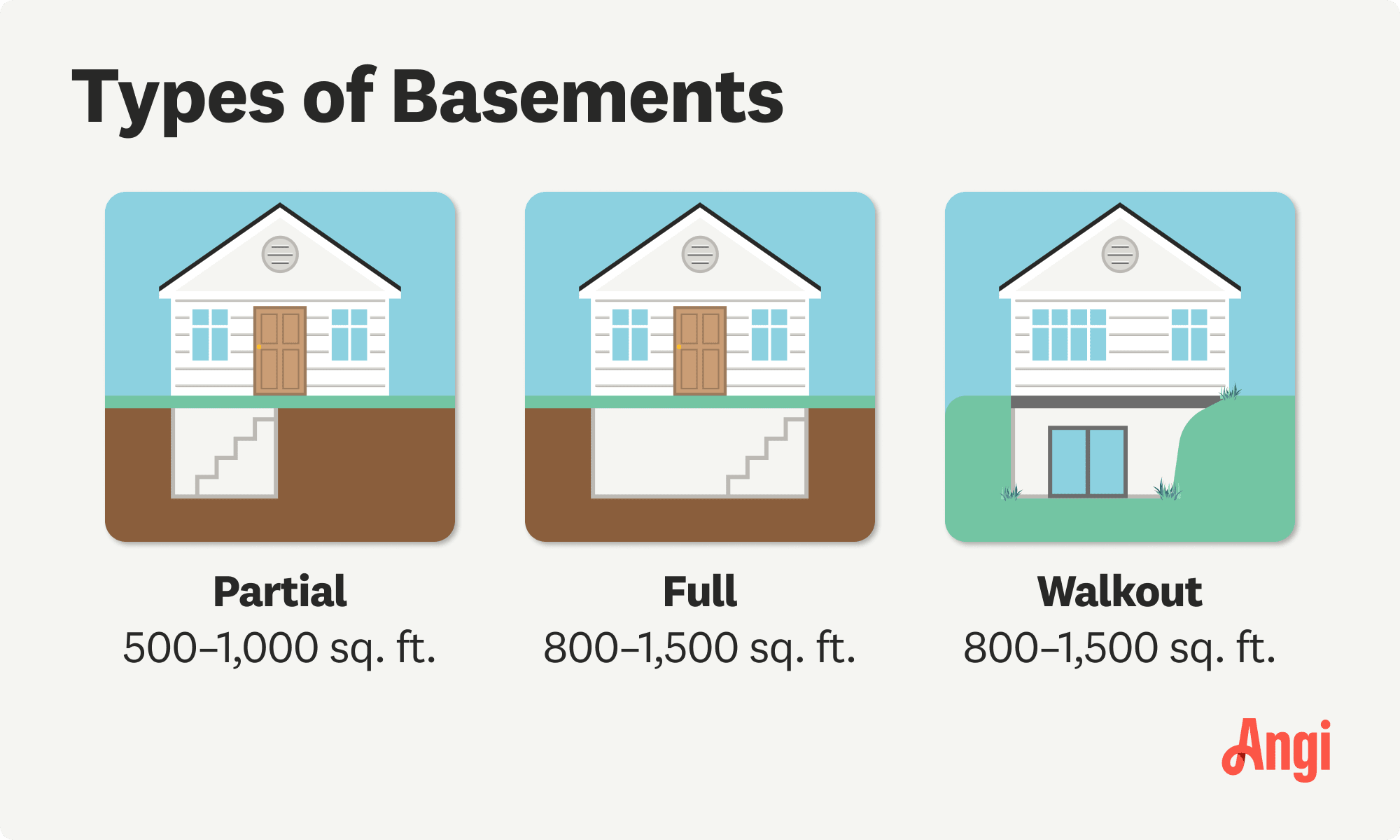
A partial basement, sometimes called a cellar, is between 500 square feet and 1,000 square feet, on average. It takes up just a portion of the home’s footprint, and a slab acts as the foundation for the remaining part of the home.
Partial basements are more often used for storage than they are for living space, but it’s possible to add utility and value by finishing the basement and using it as a home office or entertainment area. Since they’re not meant to add to your living area, they almost always have ceilings that are 7 feet tall, which is the minimum ceiling height for a basement.
The average basement size for a full basement is 1,000 square feet, and most range from 800 to 1,500 square feet, again depending on the footprint of your home. The key distinction is that a full basement serves as the foundation for your entire home. While basements aren’t usually included in home square footage, they will have the same dimensions as your first floor.
Most full basements have ceilings that are 7 feet tall, but basements in new-build homes can have ceilings at the standard 8 feet tall, and basements in luxury homes can have ceilings at 10 feet tall.
You can use a full basement for storage or finish the basement to use as a living area, depending on building codes in your area.
Walkout basements average 1,000 square feet and range from 800 to 1,500 square feet on average. A walkout basement is a type of full basement that has at least one wall that opens up to ground level, which is possible on sloped lots.
Walkout basements have an average ceiling height of 7 feet, but these can also have ceiling heights up to 10 feet.
The easiest way to calculate your basement size is to measure the length and width in feet and multiply the numbers to get the square footage. Alternatively, if you have a single-story home, you can check public record for your home’s square footage, which should match your basement’s square footage.
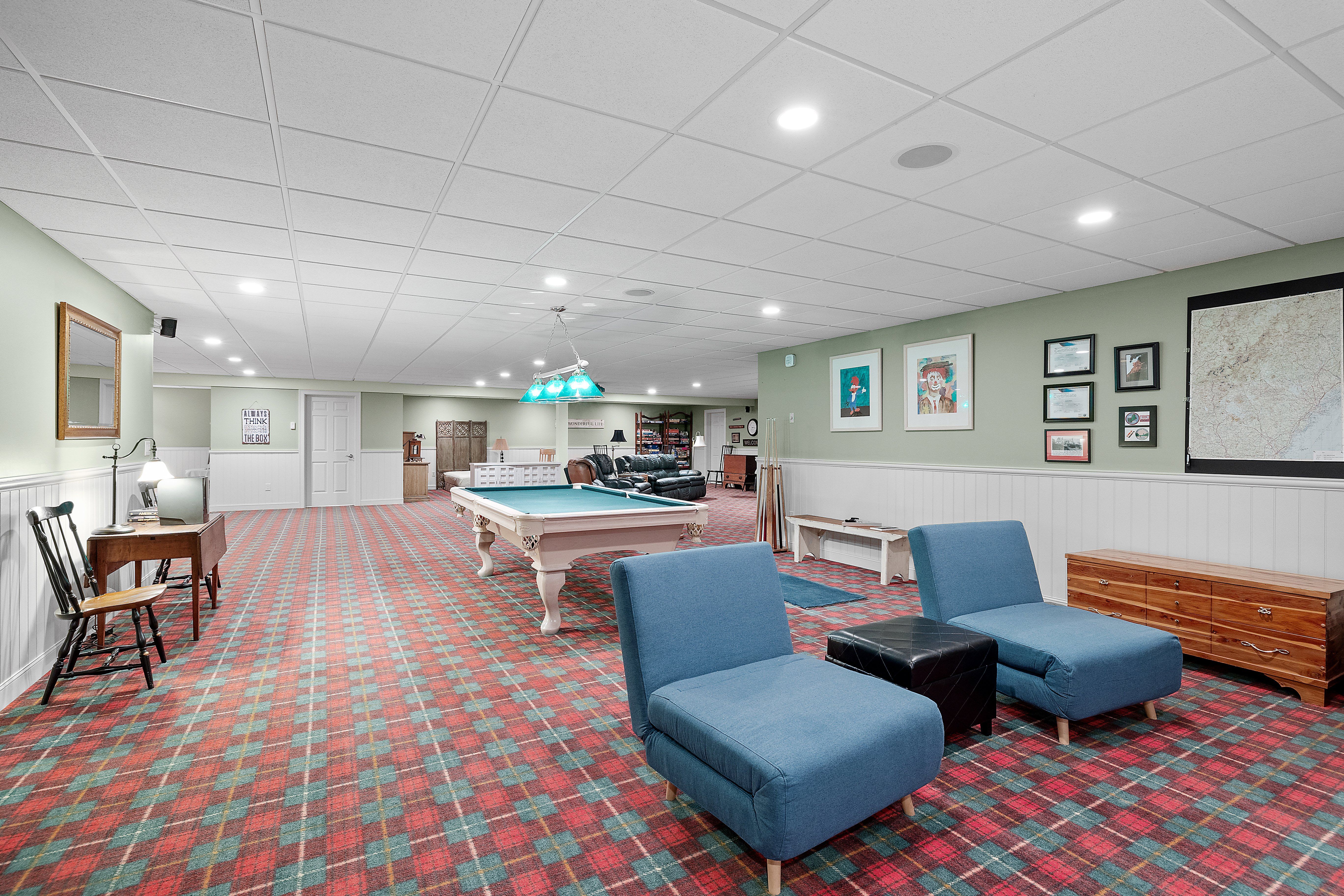
Basement sizes and dimensions vary widely because there are a few things that affect the sizing. Make sure you consider all of these before deciding on basement dimensions if you’re building new construction or planning an expansion of your existing basement.
Basements are the most expensive type of foundation, averaging $37 per square foot for the excavation and construction. In fact, they’re so much more expensive than a slab foundation that many homebuilders will forgo digging basements if the climate doesn’t demand one to keep utility lines safe from freezing temperatures.
For homeowners considering the cost of new construction, basement size will play an important role in site prep and will also lay the groundwork for the rest of your building costs, as the foundation determines the square footage of your home, too.
The type of basement you have will also determine the size. Partial basements are, on average, half the size of full basements and walkout basements. Partial basements that act as small storage cellars can be less than 100 square feet, while full basements and walkout basements can easily expand to 1,500 square feet or more.
A basement is more than just a space for storage or added living space—it also acts as the foundation for the rest of your home. As such, full basements and walkout basements must match the footprint of your first floor.
For partial basements, your home’s footprint matters less, as your basement can be any size that’s smaller than your first floor, with the difference made up with a partial slab foundation. In older homes, you may even find a crawlspace area making up the difference, although this is exceedingly rare in modern homes with partial basements.
Finally, your lot size can affect the size of your basement, since most municipalities have setback laws that prevent you from building within a certain distance from your property lines. In areas with smaller parcel sizes, basement sizes will fall well below the average because the property lines limit the length and width.
If you find that your basement is too large for your needs, you can partition off parts of the basement to make the space feel smaller and cozier. A basement finishing professional near you can build walls and create the space you need.
More often, though, homeowners find that their basements are too small. If the standard 7-foot ceiling height is an issue for you, it’s possible to raise the basement ceiling, although you’ll pay an average of $19,200 to get the job done and up to $90,000 for bigger jobs. If the square footage is the problem, particularly if you have a partial basement and want a full basement, you can expand the space, but you’ll pay between $20,000 and $80,000 for the work, in most cases.
Since basement remodeling costs are so high, you may want to consider alternatives. For example, if you’re looking to add living space to your home, building a home addition costs significantly less.
From average costs to expert advice, get all the answers you need to get your job done.

Walkout basements cost more to install than traditional basements. Our guide explores the factors that affect how much a walkout basement costs.
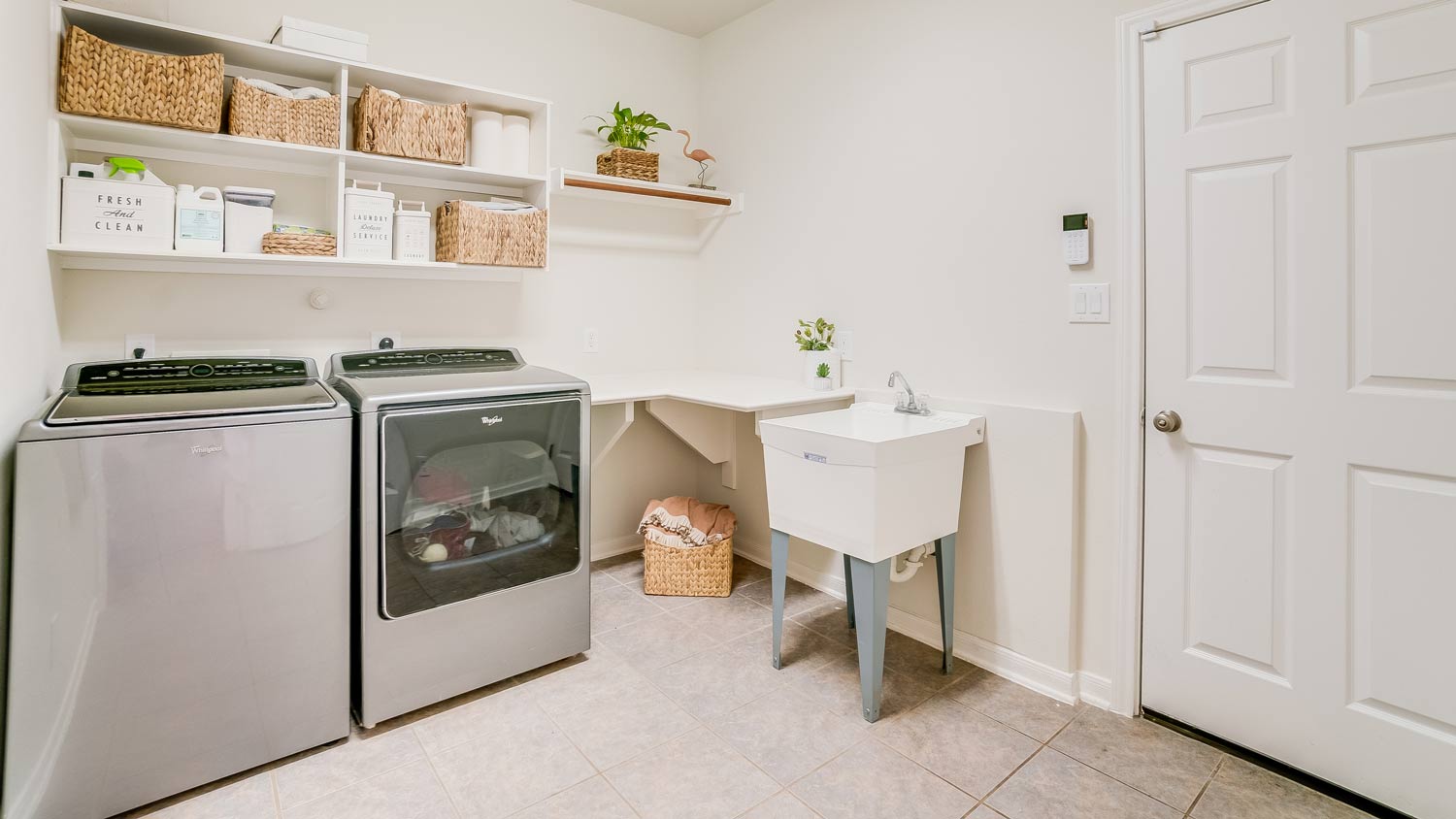
Discover the cost to finish a basement laundry room. Learn about average prices, key cost factors, and tips to budget your basement laundry remodel.
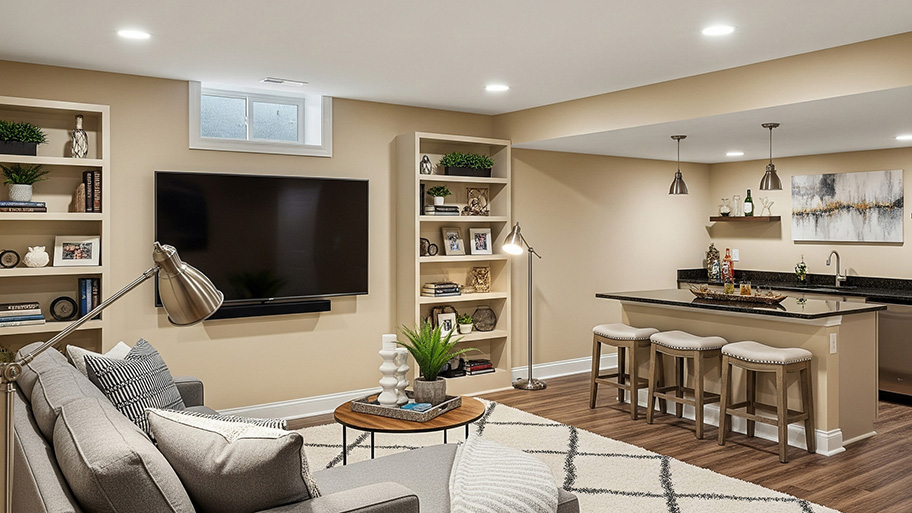
An unfinished basement has a lot of potential for a family room or guest suite. So how much does it cost to finish a basement? Read on for all cost factors.

Thinking of finishing your basement? Before you do, learn about when permits are required and what happens if you don’t get one before beginning construction.

Hiring a bad basement remodeler can wreak havoc on the look and longevity of your unfinished space. Here are red flags to look for as you vet basement contractors.

A finished basement adds valuable living space to your home. Learn how much value a finished basement adds to your home and what affects your return on investment.